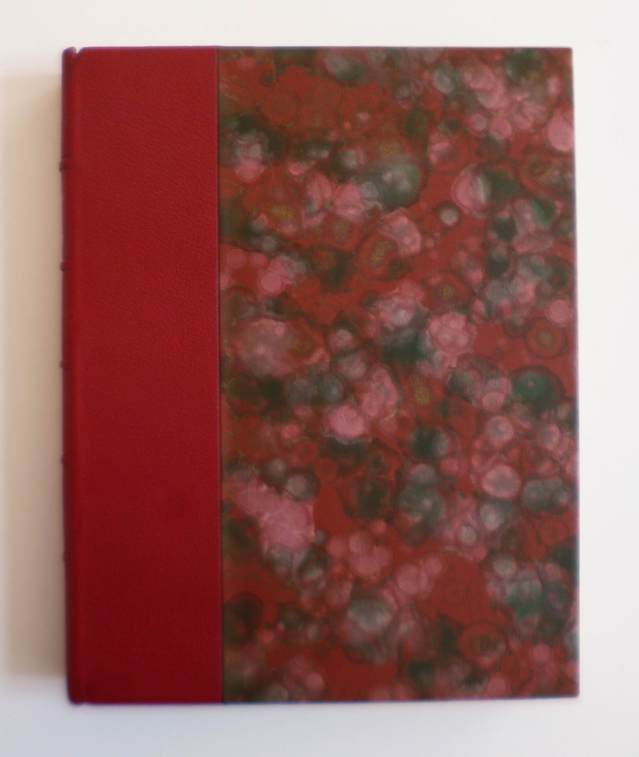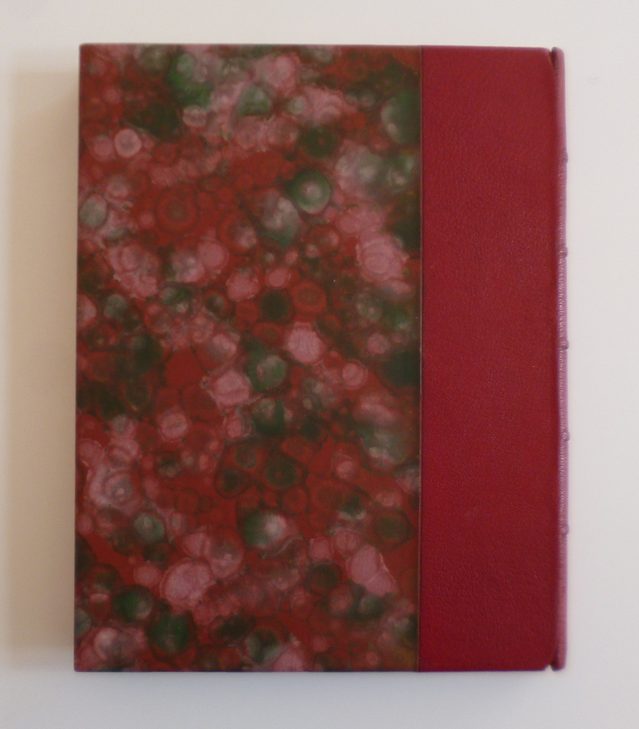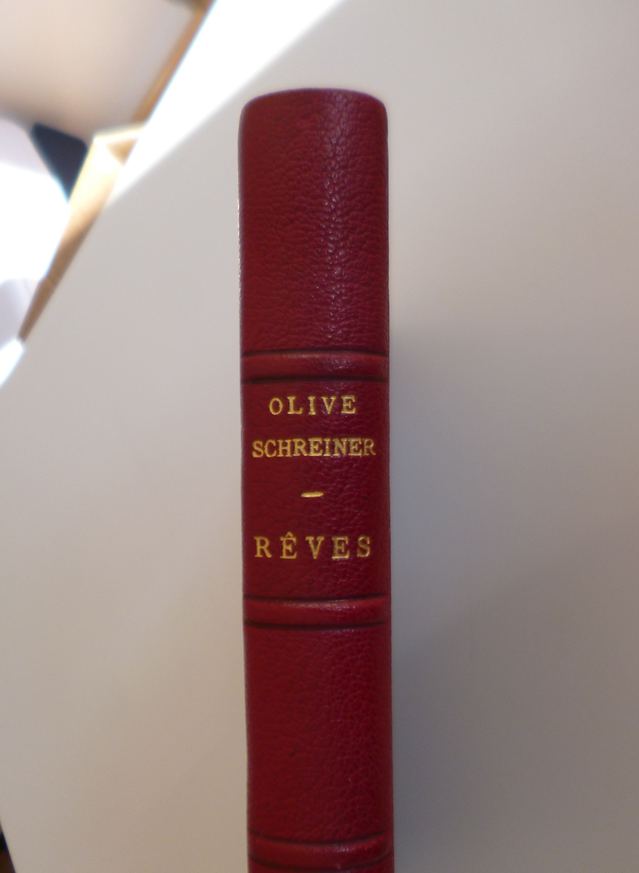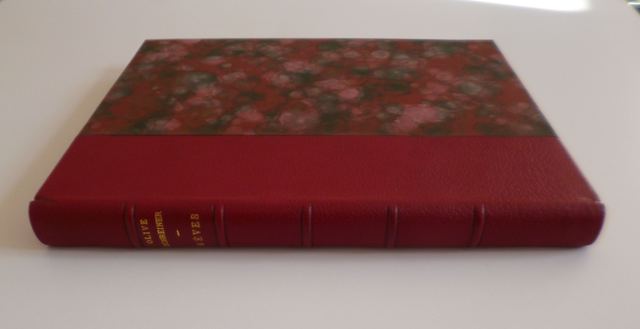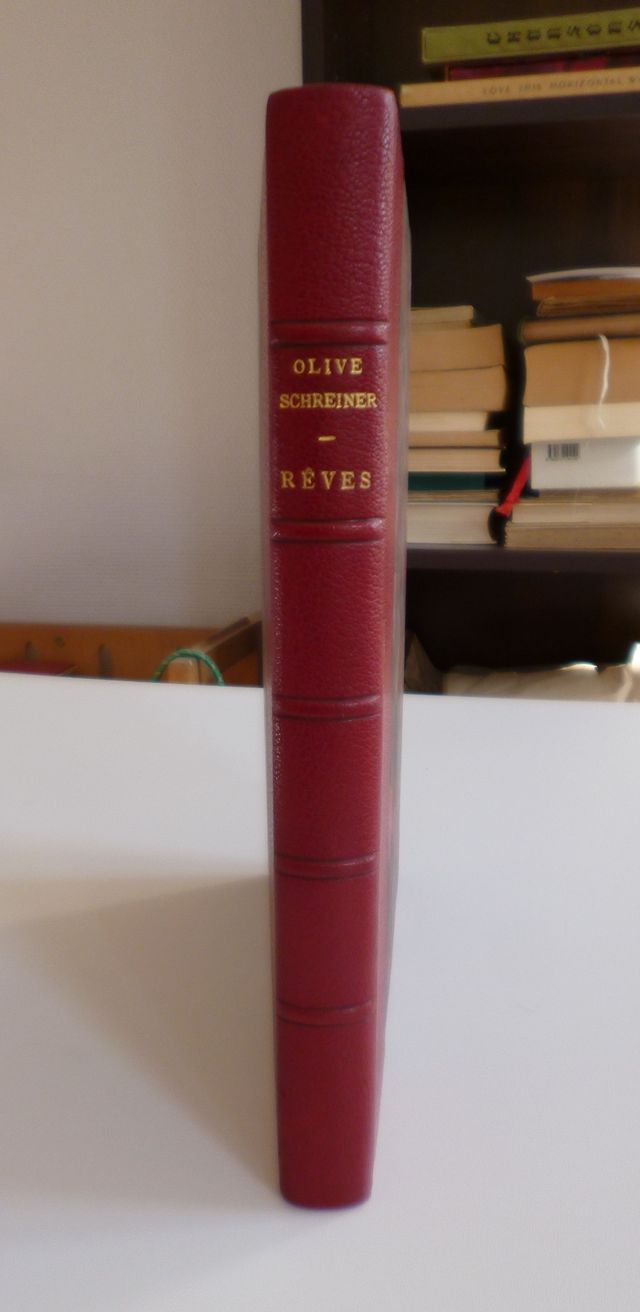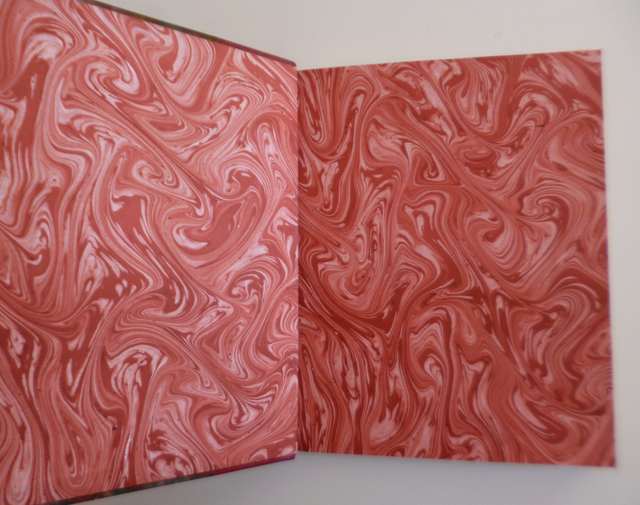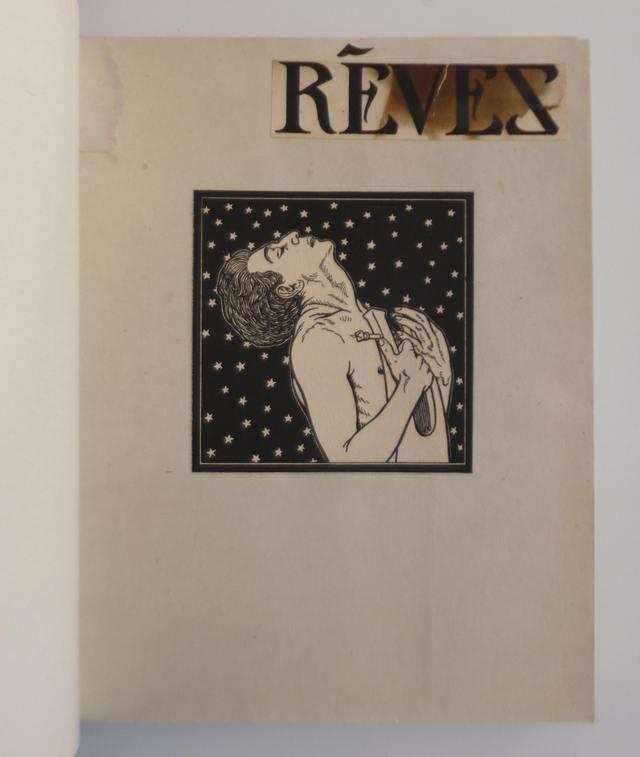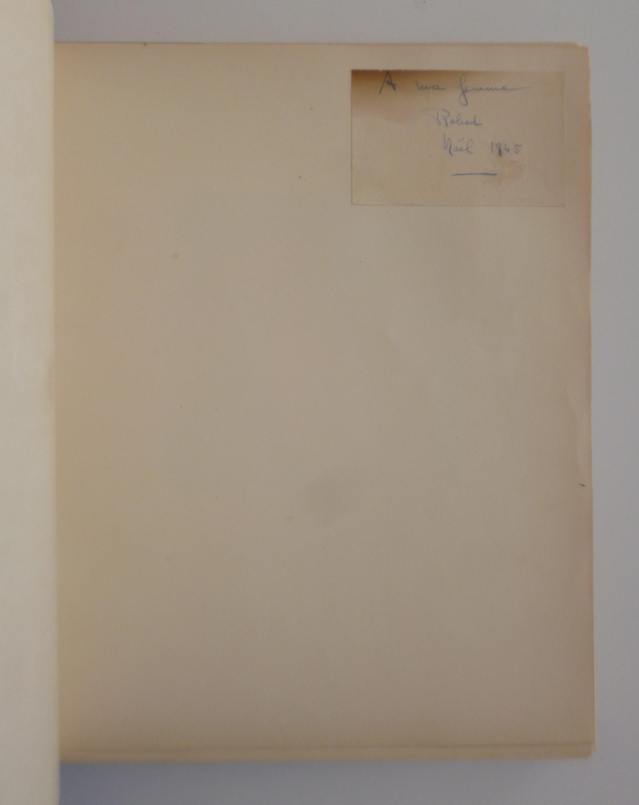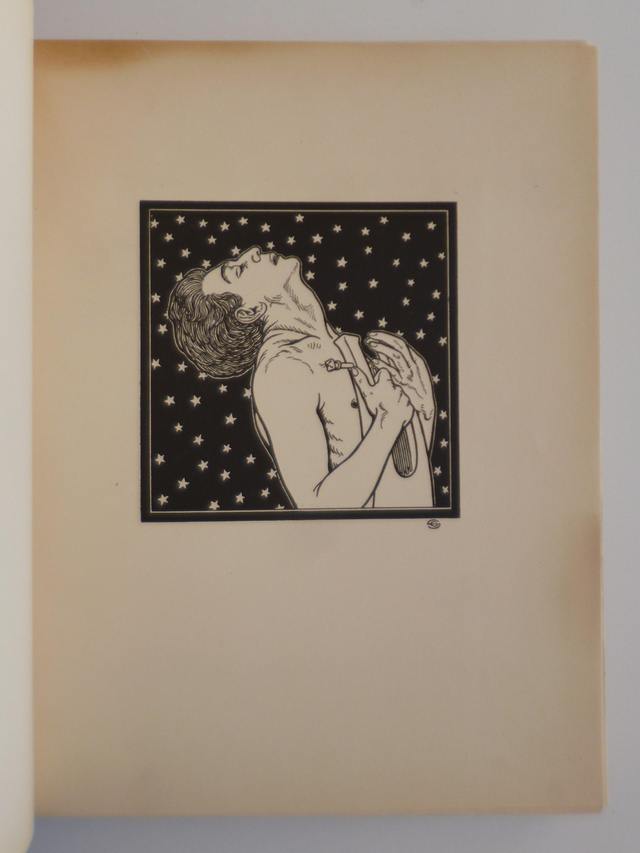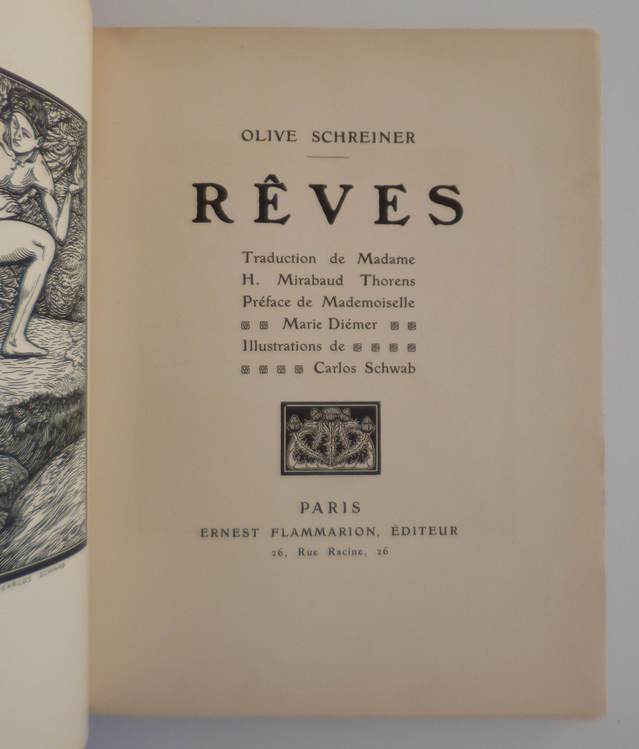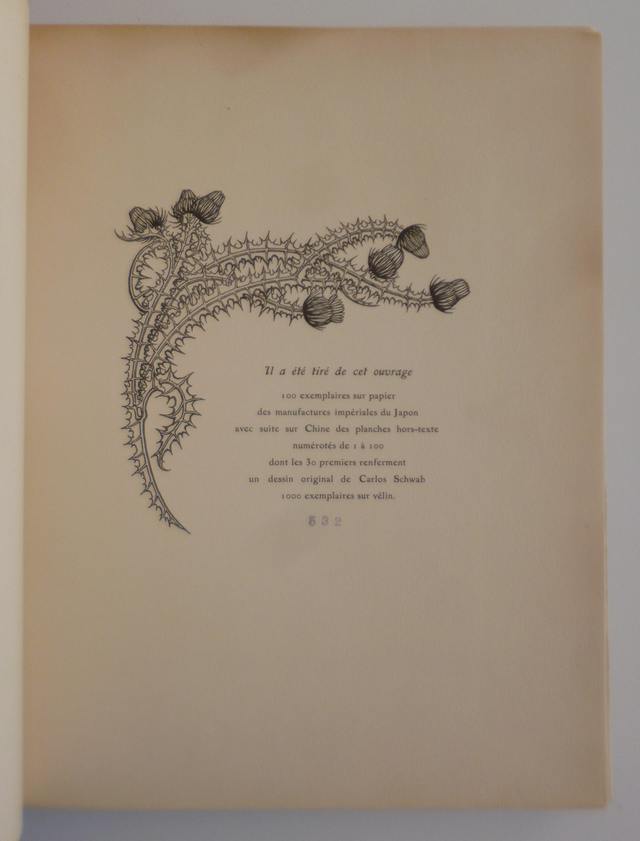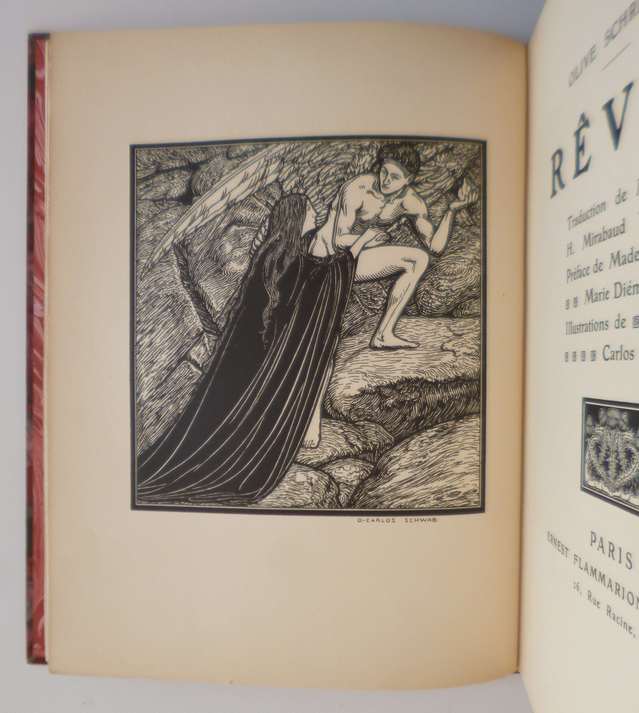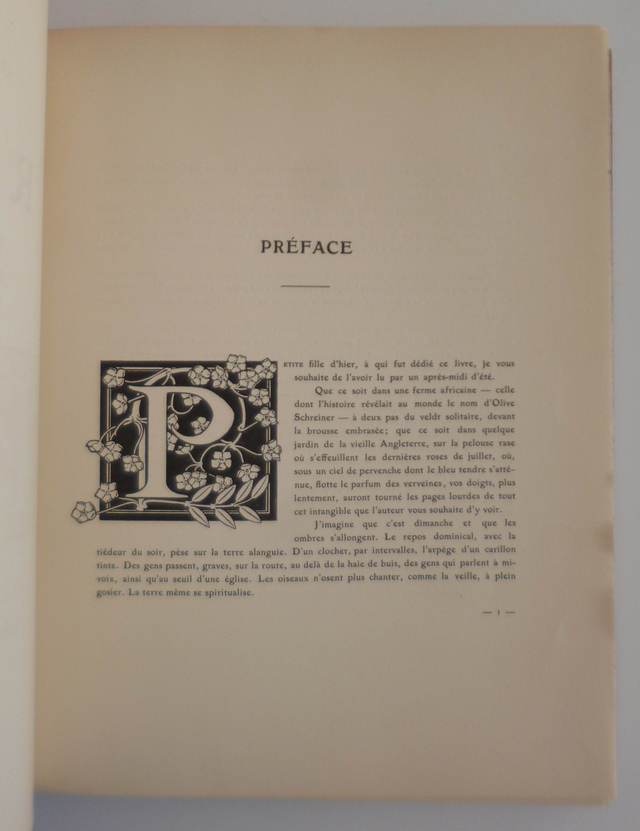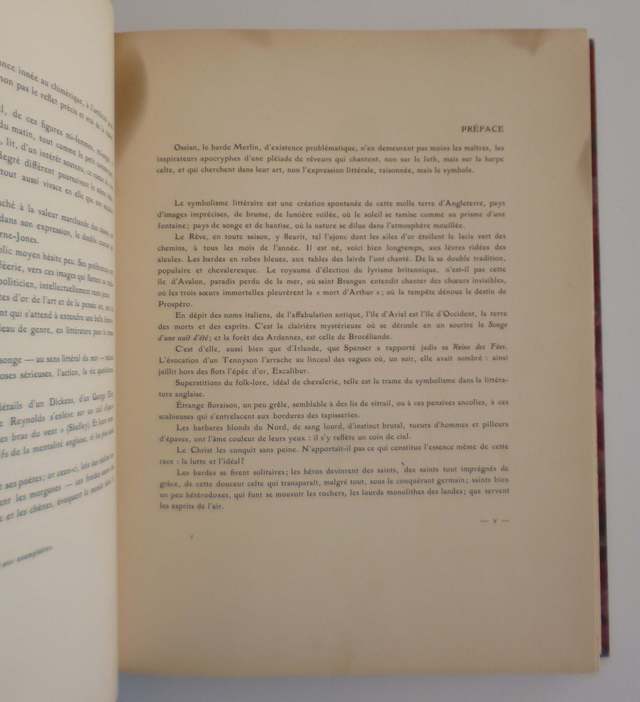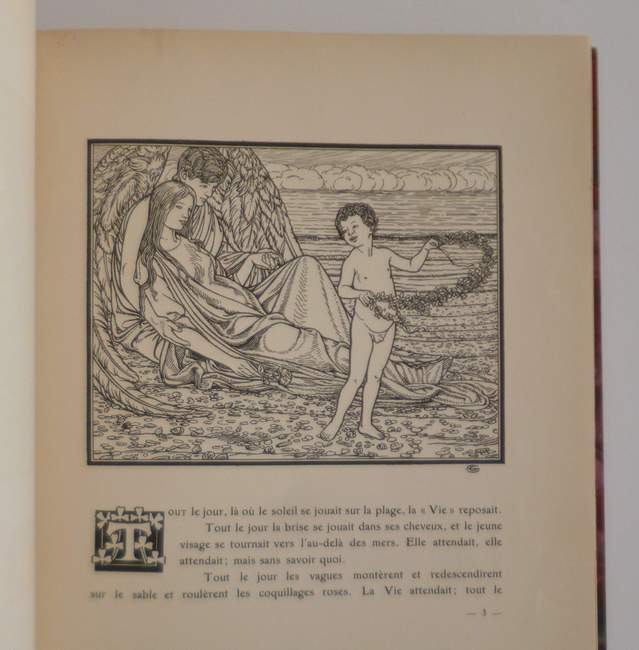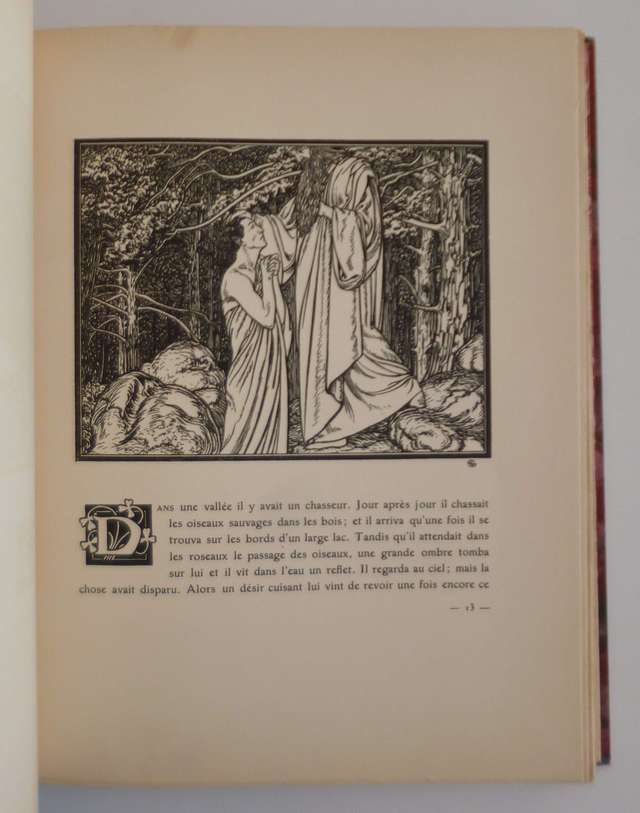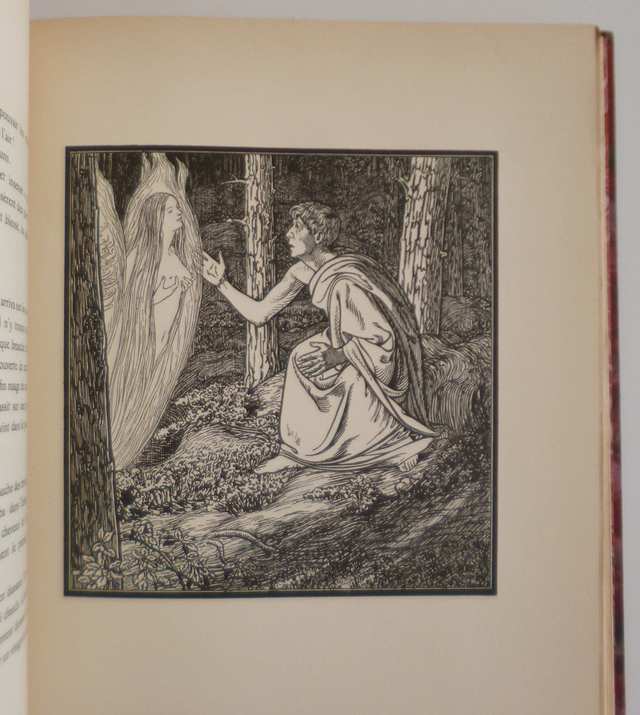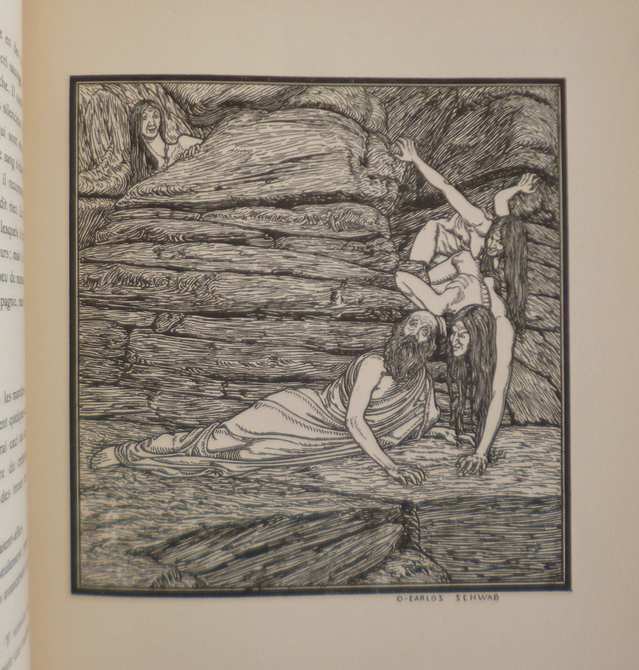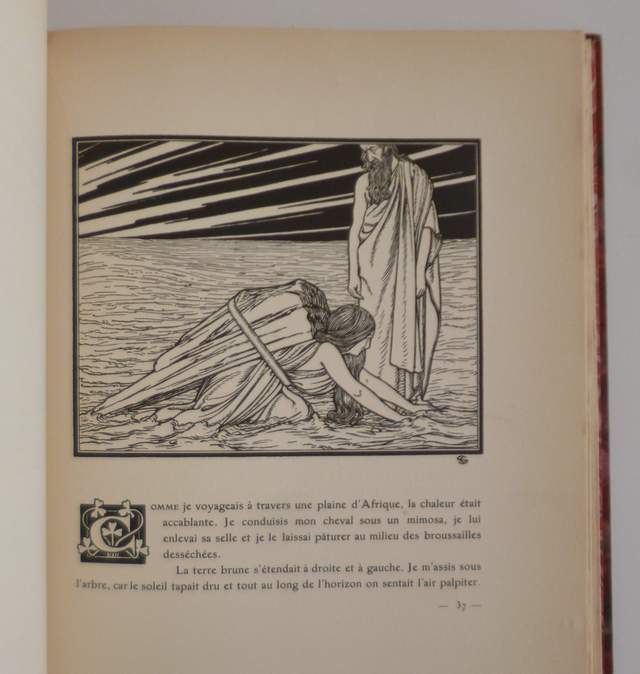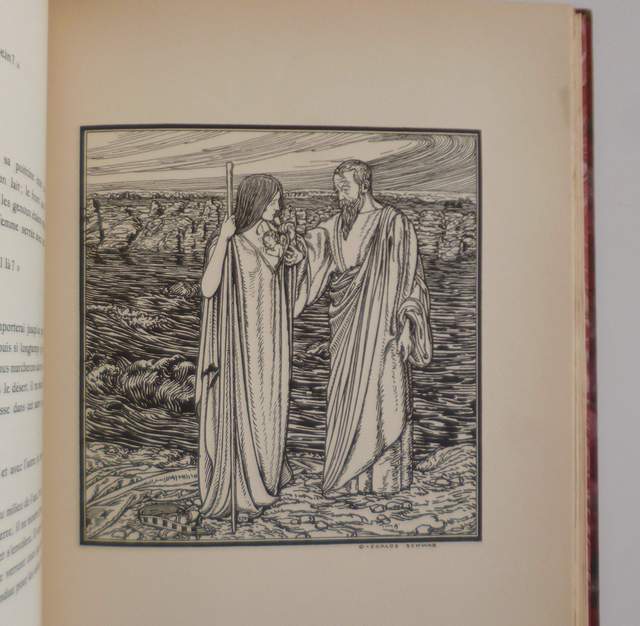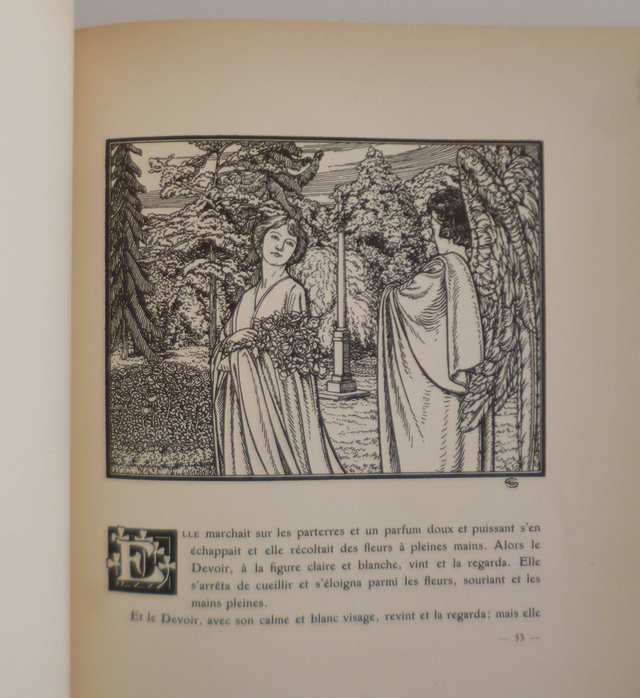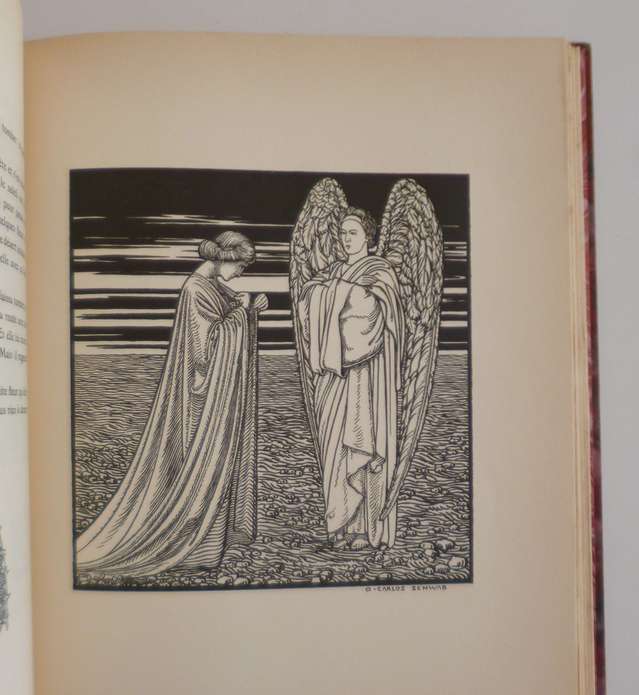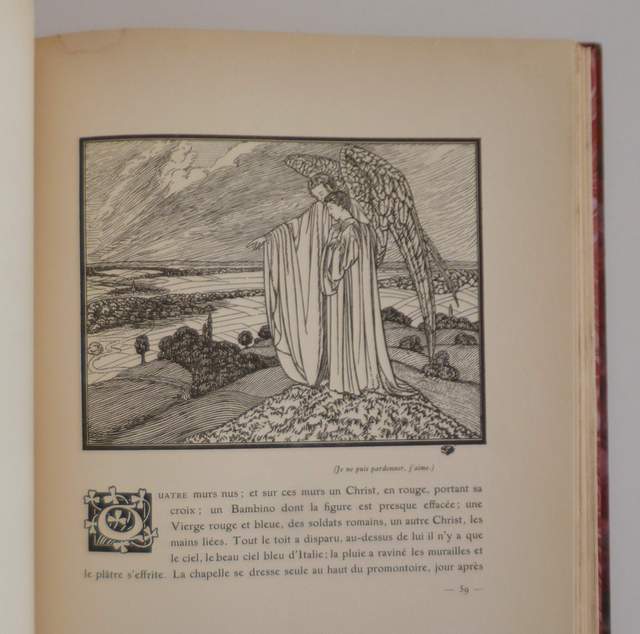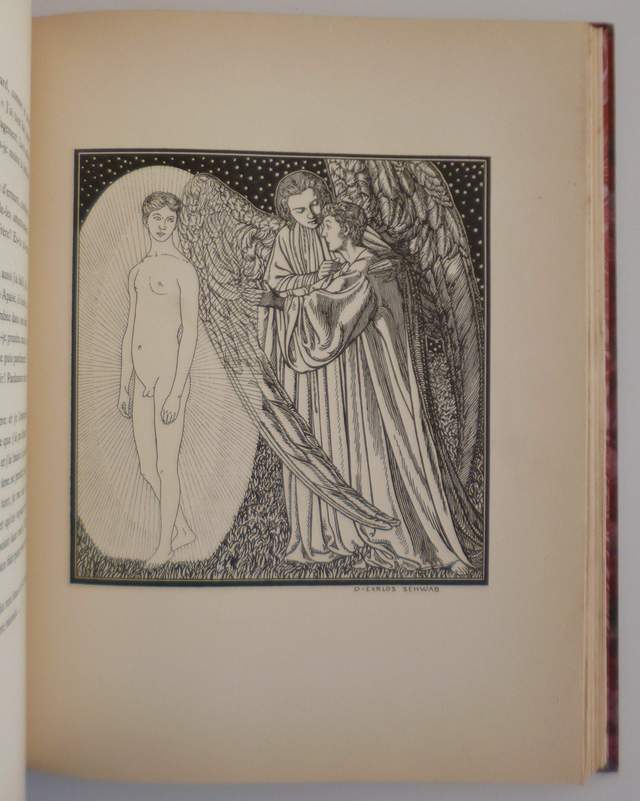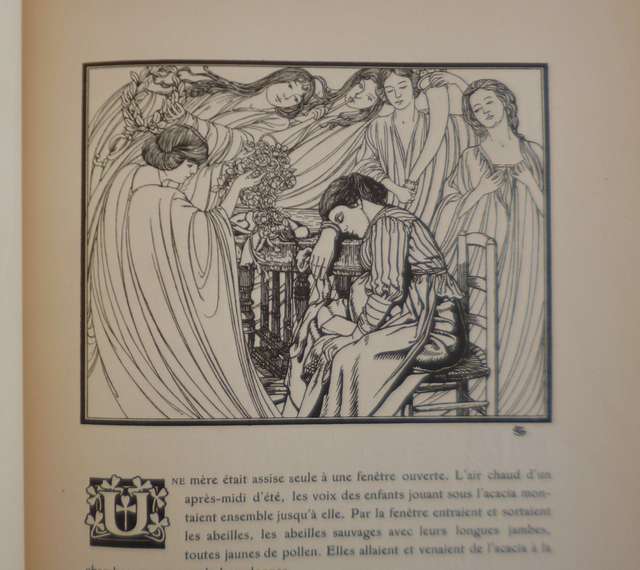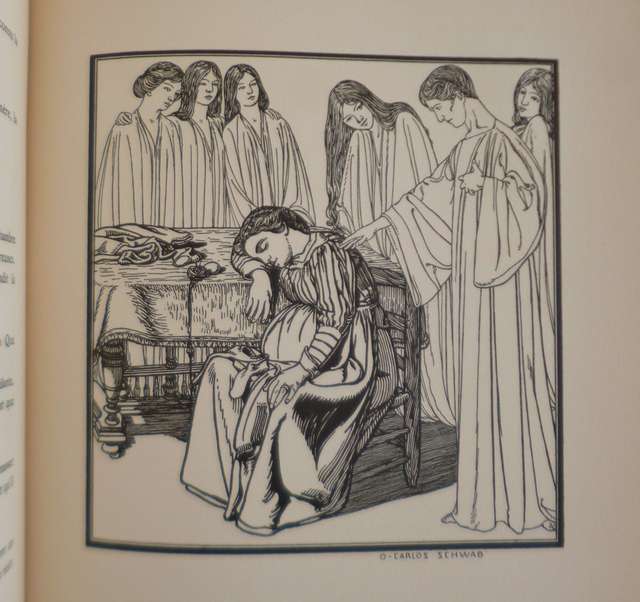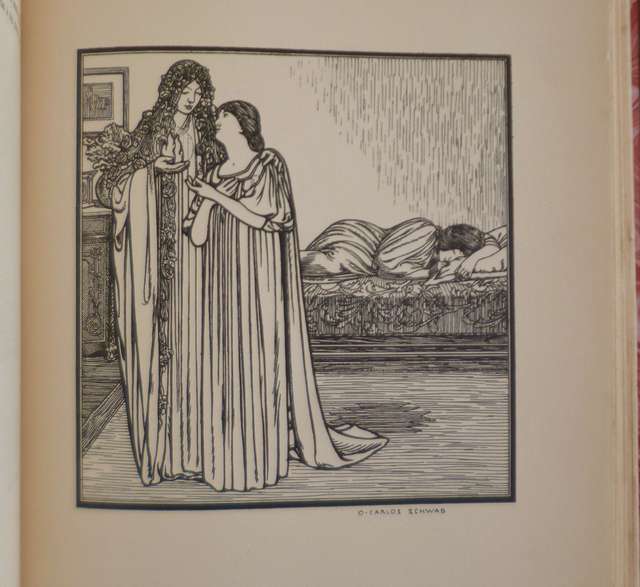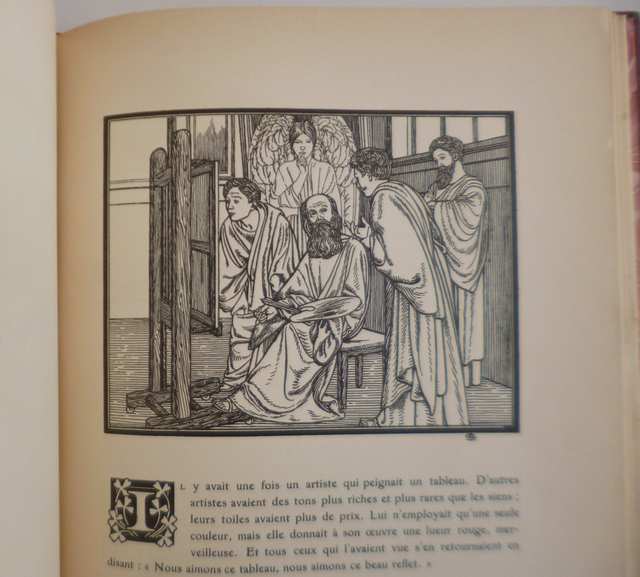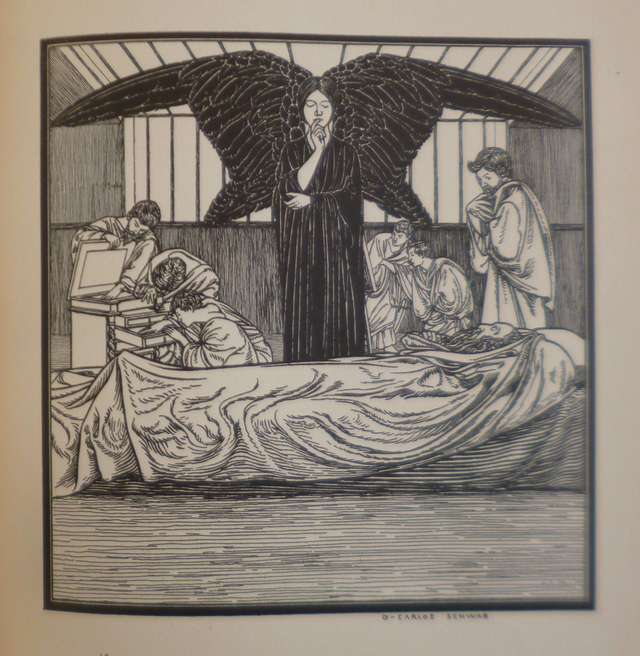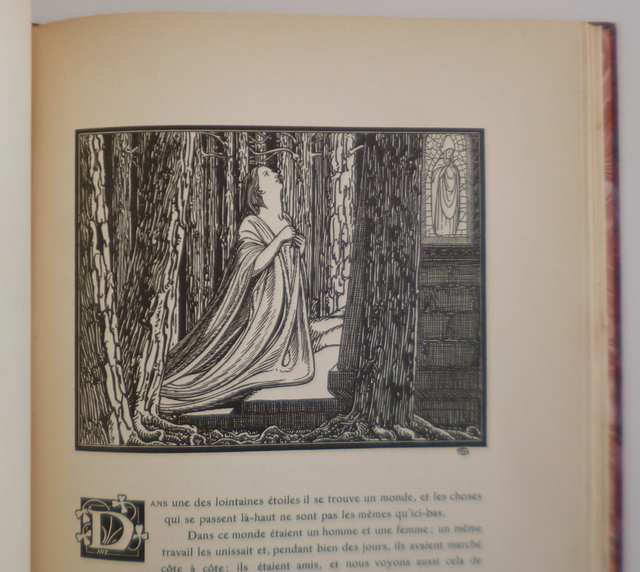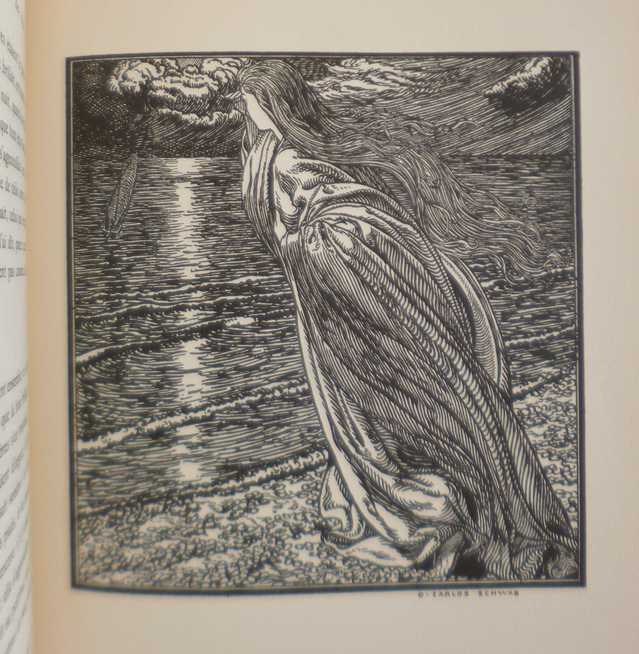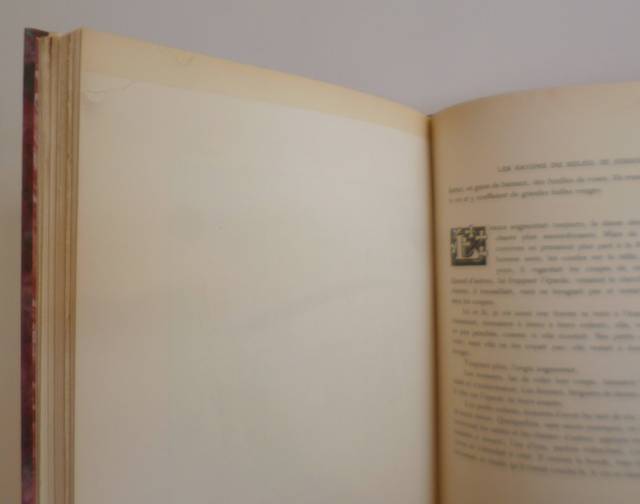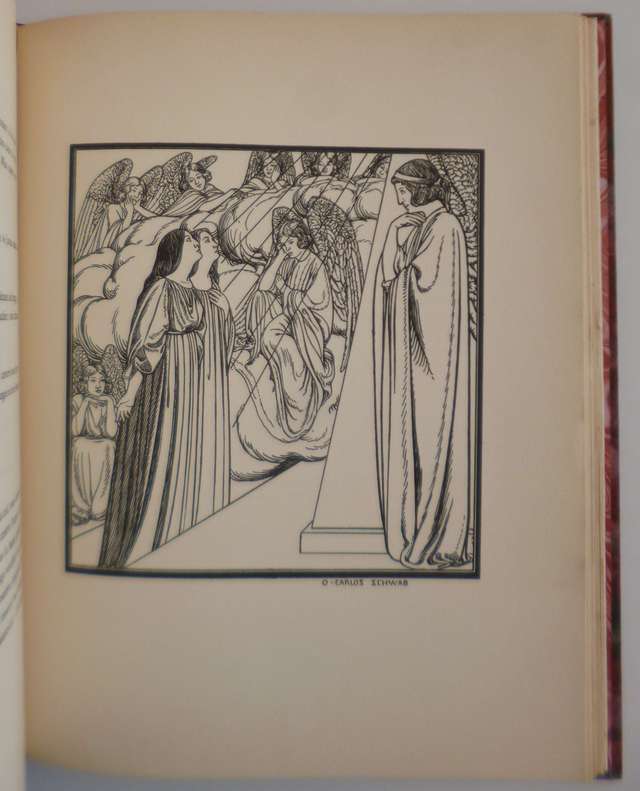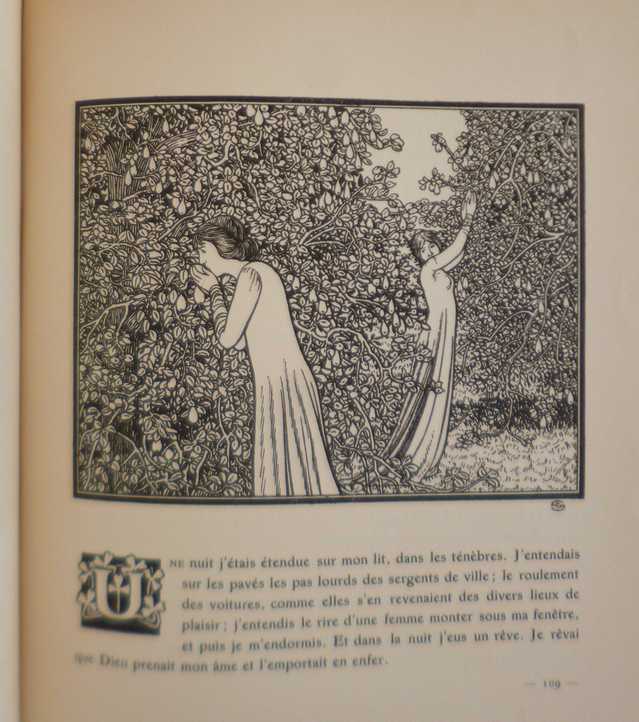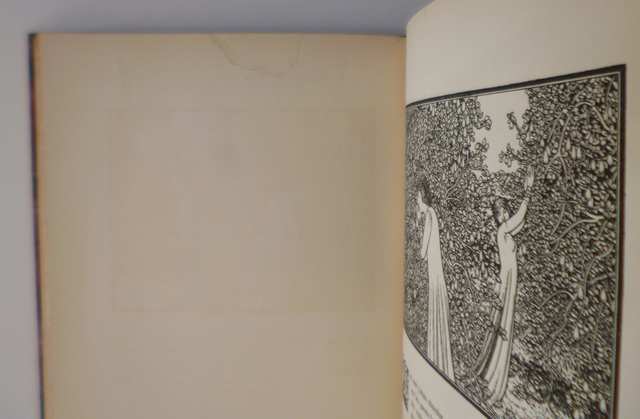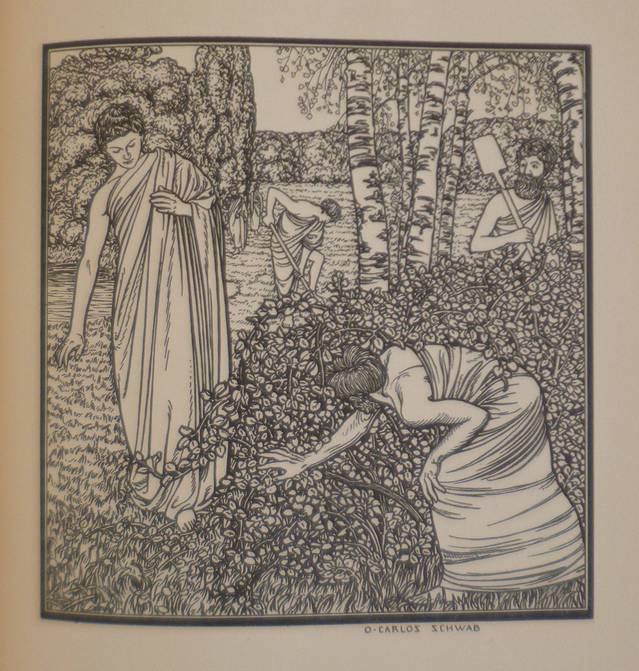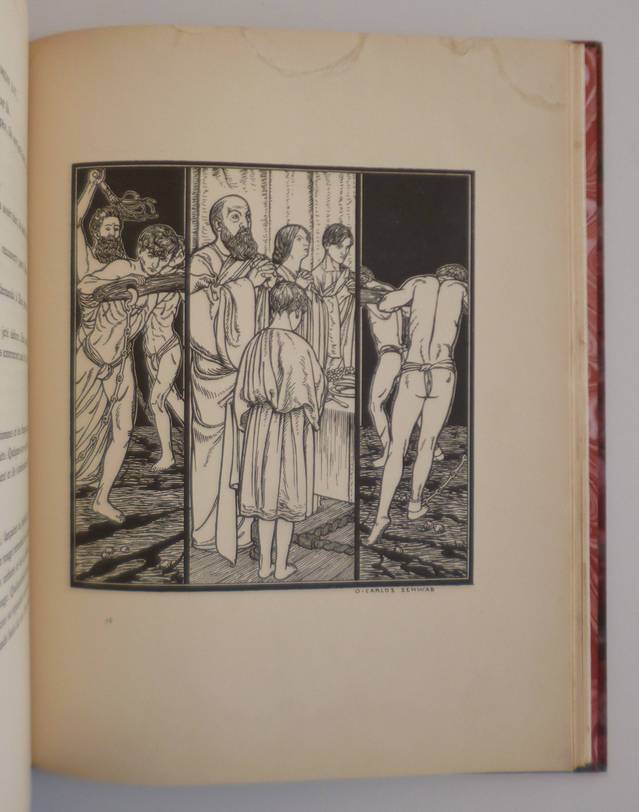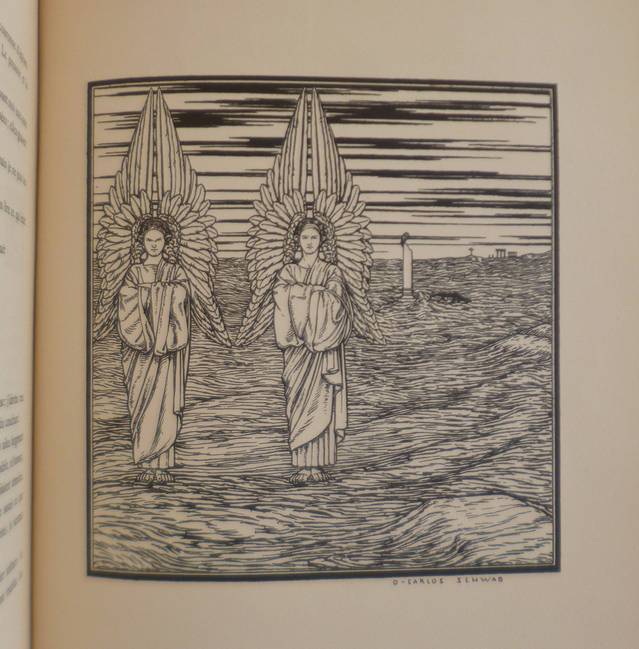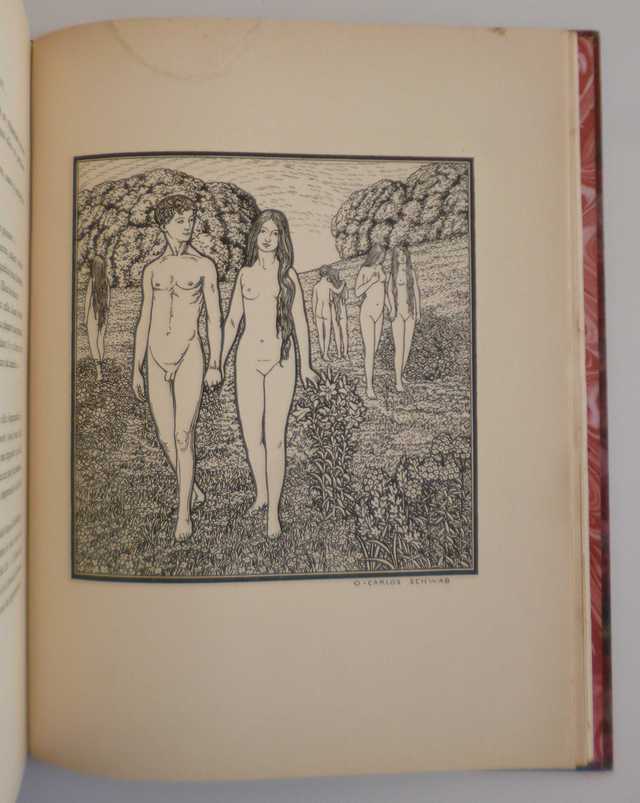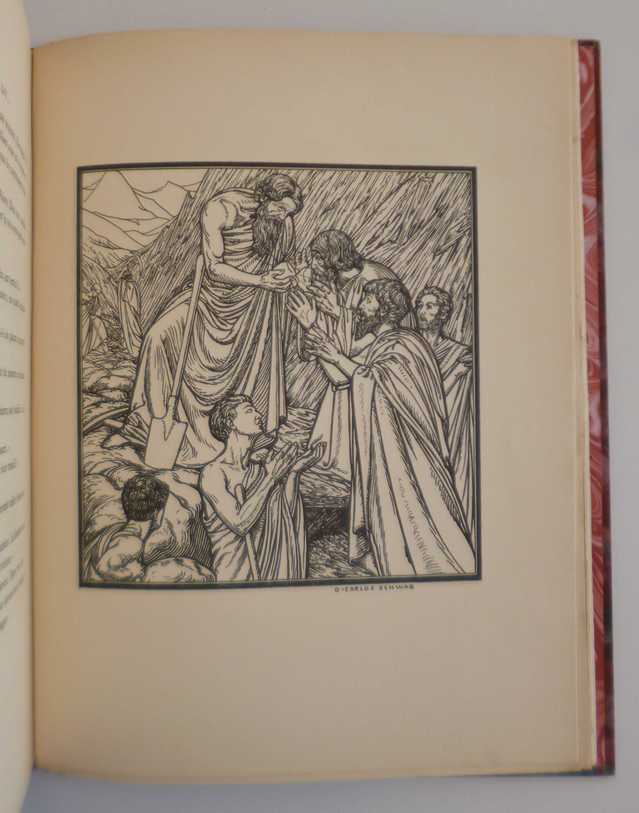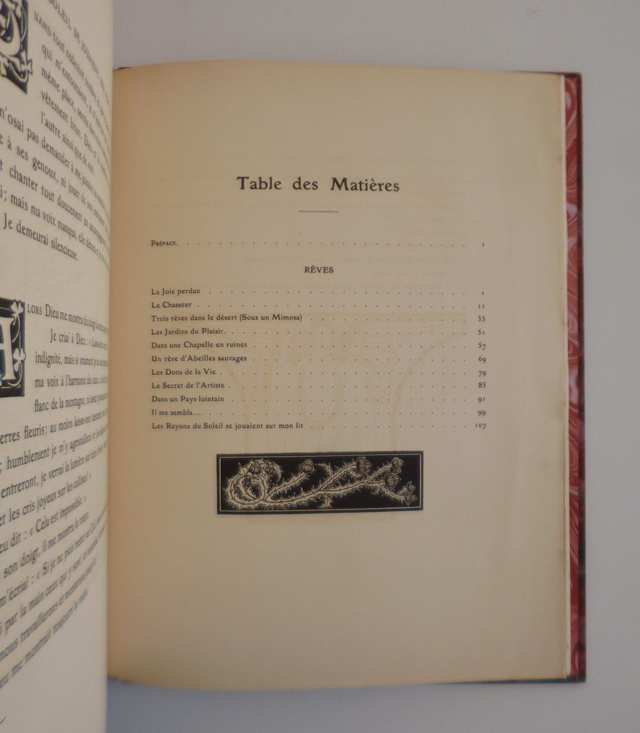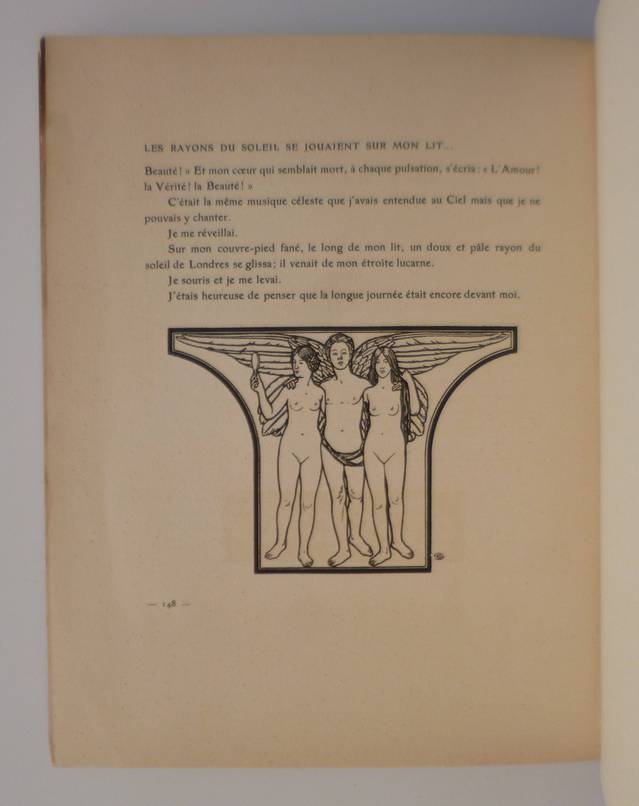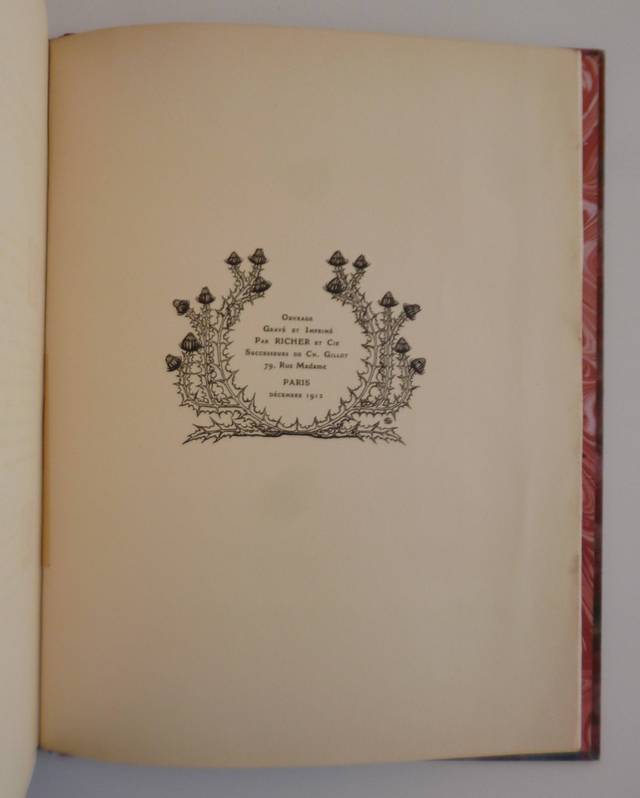DREAMS
through
Olive Schreiner
Flammarion, undated (1912), (29 x 22.5 cm), 148 pages, half-shagreen binding, five-ribbed spine, handmade paper covers and handmade paper endpapers.
Translation by Madame H. Mirabaud Thorens. Preface by Miss Marie Diemer. Illustrated by Carlos Schwab.
Two frontispieces, 18 illustrations inset, 11 headbands, 10 tailpieces and various ornaments, all woodcut after Carlos Schwab (Schwabe).
Large format printed in 1100 copies, 1/1000 numbered copies on vellum.
Copy in good condition, some browning and skillfully restored pages, binding in very good condition.
Émile Martin Charles Schwab said Carlos Schwabe, born in Altona near Hamburg in 1866 and died in Avon in 1926, is a German-born painter, who lived in Geneva from the age of five, was naturalized Swiss in 1888, and lived in France, in Paris and Barbizon from 1884 until his death.
Autodidact endowed with an almost neurotic sensibility, he had no academic training1 except for a possible stint with Barthélemy Menn and at the School of Industrial Arts in Geneva where he learned to draw plants and sharpen his senses. decor, under the leadership of Joseph Mittey.
Visionary, mystical and eminently solitary, he was however quickly involved in the most active Parisian circles as soon as he finally settled in Paris and became one of the most brilliant auxiliaries of "Sâr" Peladan. He produced the first poster for the Salon de la Rose-Croix, reproduced in Les Maîtres de l'annonce (1895-1900). His art of drawing and his idealism led him to become a renowned illustrator: Stéphane Mallarmé, Albert Samain, Charles Baudelaire, Émile Zola with whom he adorned Le Rêve, Maurice Maeterlinck, José-Maria de Heredia, Pierre Louÿs, Catulle Mendès, Félicité de Lamennais , Edmond Haraucourt, Olive Schreiner, Charles Desfontaines (pseudonym of Baron Henri de Rothschild) etc. His original conception of the art of illustration is considered a major step in the evolution of this discipline. The illustration of Zola's Dream in 1892 is an event. Although arousing some incomprehension on the part of the naturalist writer, Schwabe's work was celebrated by the press and, on Zola's recommendation, the State acquired some of the original watercolors for the Luxembourg Museum. At the same time, Schwabe illustrated a copy of the deluxe edition of Poésies by Stéphane Mallarmé; the poet congratulates him during a lunch for his understanding of his work. Death and the Gravedigger (1900), Paris, Musée d'Orsay.
Schwabe exhibited from 1891 at the Salon of the National Society of Fine Arts, at the Salon de la Rose-Croix in 1892 and at the Salon d'Automne. He also exhibited at the Munich Secession in 1893 and in various Salons in Belgium as well as in Geneva and Zurich, and at the dealer Siegfried Bing. He was awarded a gold medal at the Universal Exhibition of 1900 in Paris and he received the insignia of Knight of the Legion of Honor in 1901. He benefited from various personal exhibitions: at the Gallery of Modern Artists in 1903, the Galerie Moos in Geneva in 1920 and, posthumously, at the Galerie Georges Petit in Paris in 1927.
A member of the "Union pour l'action morale", close to the philosopher Gabriel Séailles and Mathias Morhardt (founder of the League of Human Rights), he was a committed Dreyfusard although he was not Jewish. He also frequented occult circles and personalities such as Jules Bois and Édouard Schuré.
Carlos Schwabe is also a music lover and close to musical circles (Vincent d'Indy, Camille Erlanger); he is the best friend of the composer Guillaume Lekeu to whom he pays homage after his early death at the age of 24 in 1894.
The perfection of his graphics places him as a precursor of Art Nouveau, and as one of the most personal symbolists, having religious and social concerns but also being sensitive to a certain pantheism due to his Germanic origins. these different directions complete the portrait of an artist possessed by his ideal. The purity of its design and its expressive deformations have been compared, particularly during the 1890s, to Albrecht Dürer or Martin Schongauer and Mantegna. Before 1900, his art, imbued with a certain primitivism, is characterized by an angular line and complicated symbolic visions, of great perfection of craftsmanship. After 1900, his art gains in flexibility and becomes more carnal. Although evolving towards a style less marked by symbolism, Schwabe's work still delivers many strong images such as The Wave (Geneva, Museum of Art and History) and his preparatory studies which combine hysterical vision, references to opera and feeling of social revolt. We must also mention Le Faune (1923), in which the artist produces a symbolic self-portrait not free from melancholy.
Shipping costs are of course calculated at best in the event of a group purchase, do not hesitate to contact me for any questions.
I ship worldwide, combined shipping possible, do not hesitate to contact me for any details.
